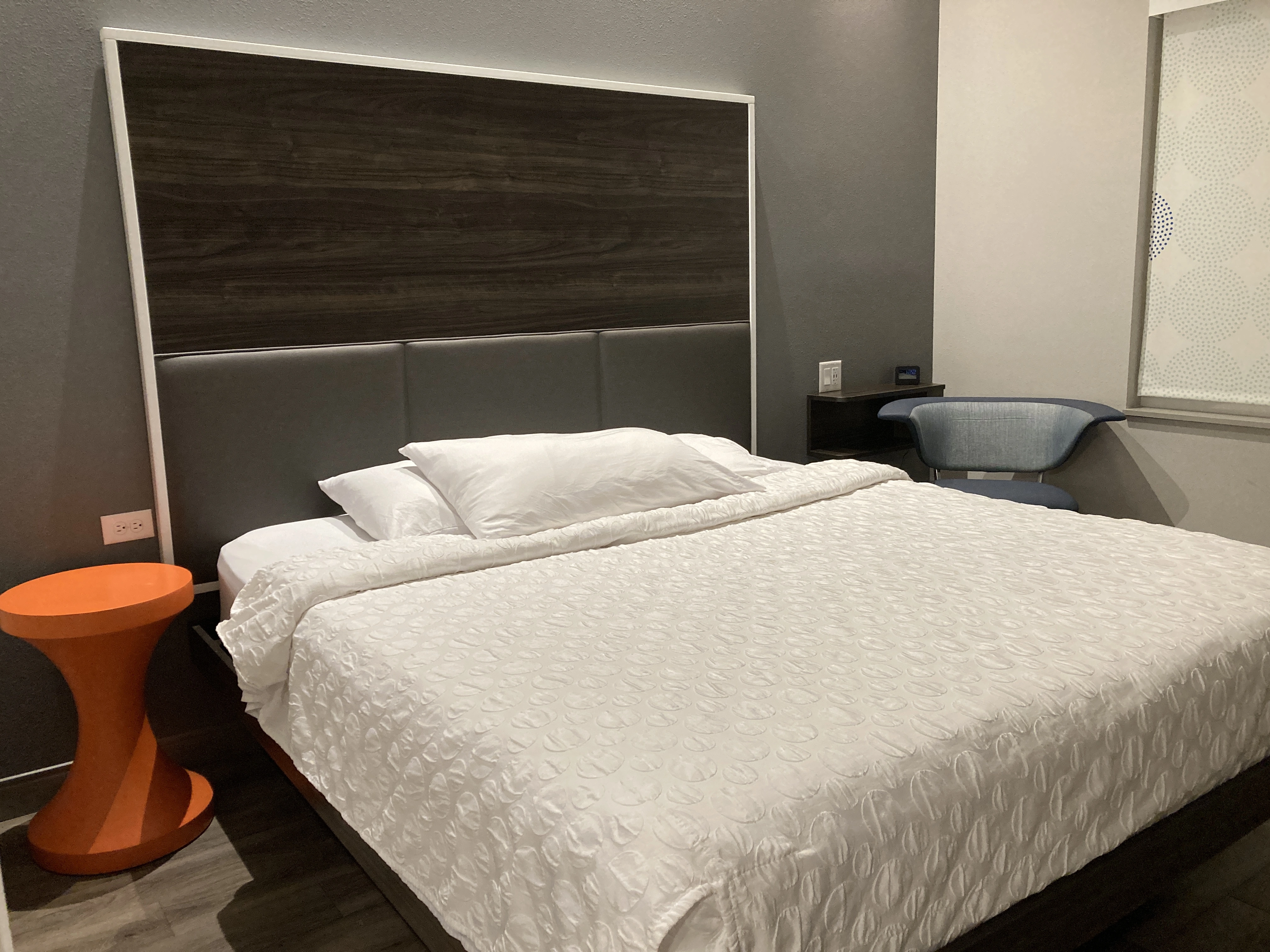
Side Hustles
Entering Self-Employment: How to Prepare for Leaving Your Day Job
Three and a half years ago, I made the decision to go into business for myself. After years of trying to put my writing skills to work, I stumbled across a Craigslist ad for a content writer and my freelancing career was born. Since then, I managed to leave my so-called “day job” (movie theatre managers don’t always get to work during the day, unfortunately), move across the country, and work from home.
Now, my wife is set to take the same leap and become a freelance writer herself. What’s exciting is that this new arrangement will allow us to live the lives we really want, including getting to do some more traveling. At the same time, I’ve been reminded how much goes into the decision to leave a full-time job. Plus, some of the troubles we’re now facing are ones I didn’t face the first time around when it was just one us that was self-employed.
With that, I wanted to share a few things — both personal and financial — that you’ll want to consider when making the transition from employee to self-employed.
 Personal Preparations
Personal Preparations
Setting Up Your Office
One of the many benefits of being self-employed is the ability to work from home. That said, if you’re anything like me, you’ll want to have a designated workspace set up to help you remain productive each day. In some cases, this may require a bit of investment on your part along with some experimentation.
The first thing you’ll need to set up your home office is a room. While this can really be anywhere in your abode, for tax purposes (more on that later), you’ll want a dedicated room to work from. Once you’ve found a space, you’ll likely want to install a desk and find an office chair that fits your needs. Keep in mind that this doesn’t need to be made of expensive, solid wood or be a trendy standing desk — you can likely find something that will get the job done in the $50 to $150 price range from retailers like Target, Ikea, Wayfair, and others.
Of course, as important as furniture can be, computing power is essential for many freelancers and other workers. If your current computer is getting a bit long in the tooth, you may want to consider an upgrade before joining the ranks of the self-employed. Naturally, the type of computer you’ll need will depend on what line of work you’re in. For example, with my wife’s duties including both video production and travel, we recently invested in a new laptop capable of editing video while we’re on the road. However, if portability isn’t a must for you, you can usually get more for your money with a desktop computer. In any case, I’d highly recommend subscribing to a cloud backup service such as Backblaze to protect your documents and ensure a tech failure doesn’t crash your business.
As for the experimentation part, making the move to working from home might not be as simple as you likely assume. From barking dogs to bad lighting and a host of other distractions, you may find that your first attempt at a work setup doesn’t quite work out. Never fear — there’s always room for change and solutions to a number of these problems. Personally, I’ve added a lamp to my office, discovered the power of headphones and instrumental music, and realized how an occasional few hours working out of my local Starbucks can serve to get me refocused and on track. Getting used to your new office is a process, so be ready to make adjustments as needed.
Marketing Yourself
Something most people might not realize when working a day job is that they are, in many regards, a representative of their employer. However, when you’re self-employed, this becomes even truer as your name is often your brand. Because of this, it may be worth taking a look at how you’re presenting yourself online and what clients might find when searching for you.
A smart place to start is with your various social media accounts. In addition to purging any questionable posts, you may also want to either rebrand your account with a nice headshot and bio or create separate business accounts. If you’re really concerned, you can always make your professional name slightly different from your casual one, perhaps going by your full first name, adding a middle name (or initial), or using a maiden name.
Beyond social, you might also want to build a simple website for yourself and your services. There are a few advantages here, starting with the fact that a website with your name for the URL is likely to rank well in Google. This means people searching for you will come across your site first and essentially see what it is you want to show them. Although there are plenty of options for building a business site, I’ve found Squarespace to be extremely easy to use, even for those with little website building knowledge.
Speaking of showing, your personal site is also a great place to highlight your various projects and skills. In that way, it could help seal the deal with clients you’re already in talks with or get the attention of those you might not have even met yet. Although you might already have a few clients lined up if you’re already planning to leave your full-time job, it’s always good to put yourself out there should things change down the road.
Retaining Your Health Insurance
In recent years, one of the biggest topics in American politics has been health care. As part of the Affordable Care Act passed in 2010, the majority of employers were required to offer their full-time employees (defined as those working more than 30 hours per week) the option to buy into a group health insurance policy. As a result, if you’re working a full-time position right now, there’s a strong chance that you also maintain a health insurance policy through your employer — something that you’ll definitely need to consider when looking to set out on your own.
There are a couple of different ways you can retain your health insurance when making the move to self-employment. The first option comes courtesy of what’s known as COBRA. This policy ensures that workers are able to stay on their group health insurance plan for up to 18 months after terminating their employment. However, the downside to this program is that it can be quite expensive as individuals will not only have to continue paying their portion of the insurance premium but also cover what their employer was paying. On top of that, you’ll also be assessed a 2% service charge, meaning you’ll be paying 102% of your policy premium.
Before signing up for COBRA, you may want to check the Affordable Care Act insurance exchanges instead. Although open enrollment for 2018 policies has already closed, you’ll still be eligible to sign-up as job loss is one of the “qualifying life events” that trigger special enrollment periods. To preview available plans in your area and to see if your projected income qualifies you for a subsidized premium, you can visit HealthCare.gov and follow the directions.
Keep in mind that, under the Affordable Care Act, individuals who don’t maintain adequate coverage may be subjected to a yearly penalty. While the recently signed GOP tax reform bill repeals that so-called “individual mandate,” the fine will still be in place for 2018. In fact, it will cost you a minimum penalty of $695 to go uninsured this year (unless you qualify for a waiver).
 Financial Considerations
Financial Considerations
Tracking Your Expenses
As I’ve mentioned, being self-employed means that you are your own small business. Because of this, it’s important that you track your business expenses and keep them separate from your personal finances.
There are a number of ways you can facilitate separating your spending and tracking your business expenses. One option is to create separate bank accounts and even credit cards for your business. This will make it simple to keep both parts of your financial life in order and easily be able to total up your expenses.
Even if you do take this plan of attack for dividing up your finances, I’d still also recommend using bookkeeping software such as Quickbooks Self-Employed (which I reviewed in-depth here). In my experience, Quickbooks has helped me to not only separate out my business expenses but also remind me of transactions that could amount to tax deductions. It also offers support for tracking mileage, sending out invoices, and more. Therefore, I definitely think it’s worth the $10 a month fee.
Preparing for Tax Time
Among all the great things about self-employment, taxes may be the biggest downside that comes with the territory. Not only might you be required to begin paying quarterly estimated taxes but you’ll also be on the hook for the full FICA (Federal Insurance Contributions Act) bill — often referred to as the self-employment tax. Add in the fact that your payment will likely not have tax withheld and you can see why it’s essential to set money aside for your tax bill.
First, a bit of an explanation. When you are an employee of a company, your employer is responsible for paying half of FICA tax — which includes both Social Security and Medicare taxes — while you pay the other half. Thus, as a self-employed worker, you’ll need to pay both halves of FICA, amounting to 15.3% of your income. This is certainly something you should know ahead of time so you’re not shocked when April 15th rolls around.
Incidentally, while April 15th is famous Tax Day for most Americans, the self-employed may actually be required to pay taxes on June 15th, September 15th, and January 15th as well. That’s because business owners need to pay what are known as quarterly estimated taxes. These four payments made throughout the year should cover your full tax bill. In fact, if you fail to reach at least 90% of your tax liability (or at least 100% of what you paid the prior year) with these payments, you may be hit with a penalty. Luckily, programs like the aforementioned Quickbooks Self- Employed can help you calculate your quarterly tax payments so that you don’t run into such issues.
In terms of where you can set aside money for tax time, I like using an online savings accounts to serve as my tax fund. The advantage of the online account is that it boasts an APY upwards of 1%, allowing me to earn on my money while I wait for Uncle Sam to come calling. If you’re looking for a good rule of thumb of how much to set aside, 30% — as steep as it sounds — is actually a pretty good starting point. Of course, you may need to increase or decrease this figure depending on a number of factors we won’t even begin to get into here.
Understanding New Financial Realities
Finally, being self-employed could have a few other effects on your finances. For one, since there are a number of factors that may affect your income from month to month, it can often be “feast or famine.” Because of this, you’ll want to be very mindful of your budget and make efforts to smooth out your income.
Another potential problem presented by your irregular income is that it may prove more difficult to secure a mortgage loan or even get approved for an apartment when self-employed. That said, having strong credit and building up a track record with your business could help overcome some of these obstacles. Still, this is something to be aware of if you plan on buying a house in the near future.
All in all, I couldn’t be more excited for my wife to join me in the world of self-employment. At the same time, hurdles like retaining our health insurance, preparing for tax time, and others have shown us that self-employment isn’t something to be taken lightly. However, as long as you’re prepared for these personal and financial changes, working for yourself can be extremely rewarding and is something I’d recommend to anyone willing to listen. Good luck!




